• From custom newspapers to decorative signage, print adds personality and functionality to spaces, helping guests anywhere in the world feel more connected and informed.
• Items like logoed stickers and selfie stations show how even minor print and promo elements can drive engagement and reinforce brand identity.
• Wristbands with embedded chips and branded burger smashers illustrate how promotional items can be both practical and expressive, deepening customer interaction.
Copenhagen is magical in the summer.
I learned that last week when I visited the city. It turns out that half a year of cold and dark inspires people to really take advantage of the warm weather by biking, swimming, walking, eating and drinking.
Because of that, there is plenty of demand for the city’s hotels.
Because of that, hotels can be expensive.
Because of that, I stayed in a hostel for the first time in probably 10 years.
The thing with a hostel, especially in a city as cool as Copenhagen, is that it’s geared toward a typically cool and young clientele. It needs to create a vibe that seems inviting for people to want to sleep in close quarters and enjoy the communal spaces, and feel like they had a five-star experience.
As I walked the halls of my hostel and used the various amenities, I noticed the surprising element that elevated our stay: print.
I thought about how a business as cool and modern as a hostel in a hip European city sure uses a lot of print to create its aesthetic and hospitality experience, and how print distributors or promotional products distributors incorporating print could use it in their future branding campaigns.
Hand Something Out
When I got into my pod, which is a fancy term for a bunk bed with walls, I noticed something you don’t see every day – a print newspaper.
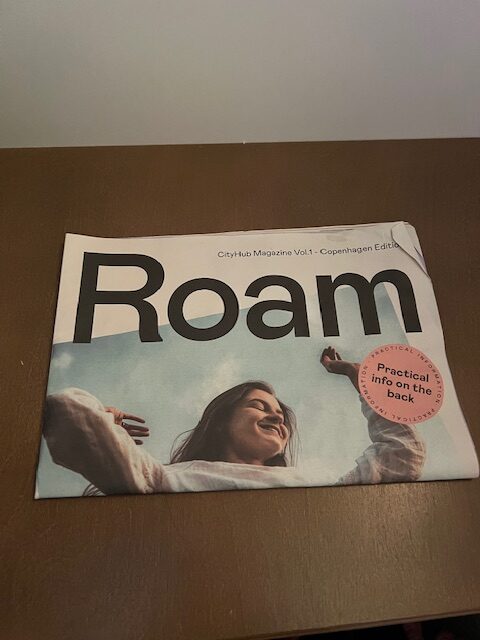
The hostel had actual newspapers printed for each guest, full of things like the history of the neighborhood, local attractions, recommended restaurants and other spots, as well as things like short bios on the employees and other personal touches. It added a new layer to the experience, where I was able to find things to do without relying on Instagram or endless Google searches. It also created a real connection with the staff, who I felt like I knew better when I saw them in the lobby.
I’ve noticed other brands go this traditional route with newspaper (not to be confused with the “paper route” that everybody had when they were a kid), such as the trendy scrubs brand Figs, which has a newspaper box in its Philadelphia storefront.
Creating the Environment
Print played a part in the decoration of the hostel, too. For example, each hallway had framed artwork to eliminate any drab, blank spaces on the walls between areas.
When you walked toward the lobby, a wall was covered in posters pointing you to the exit. Rather than simply creating a sign that said “Exit” with an arrow, it created excitement by pointing you in the direction of the city. It created a sense of adventure rather than merely being a legal obligation.
The Basics
That said, print does play a vital role in a functioning hospitality business, including window decals and printed signage that tell visitors how to locate crucial information such as fire exits.
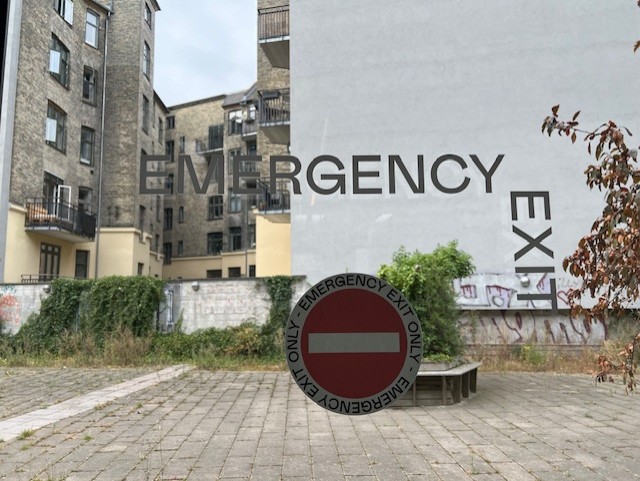
Additionally, as European countries are serious about their waste removal and recycling initiatives, each receptacle – made from paper – had printed signs attached to them to indicate what goes where. Each one was printed in a different color not just to differentiate for proper usage but also to create a decoration out of something that otherwise could be nothing more than an eyesore.
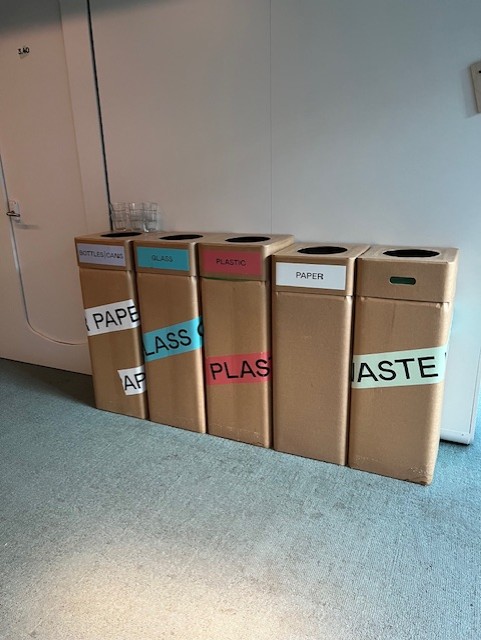
Little Touches
Speaking of keeping things clean, plenty of people decided that the hallways outside of their pods were perfect places for their shoes. This got in the way of the cleaning staff, and rather than simply placing a sticky note on the door or sending an email, the staff put little stickers on the shoes, complete with the hostel’s logo, asking the guest to please keep their belongings inside their area.
It’s a subtle touch, but it goes to show that there is no opportunity too small for brand visibility, even a gentle reprimand.
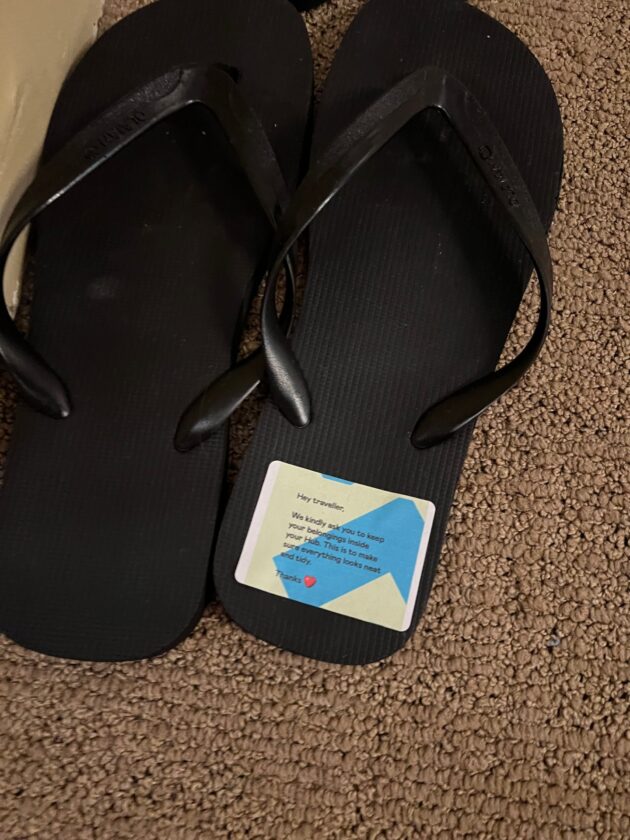
Each room, too, had a little slot for a smartphone for guests to take selfies and use a specific hashtag. Some of the selfies were featured in the newspaper. Whether they were printed or not, it’s a fun way to create engagement and do the all-important job of turning a print product (in this case, a wall decal) into a digital experience through social media. Once someone has uploaded their selfies, they’re likely to keep following along to see what others post, or at the very least see if the brand has posted their picture.
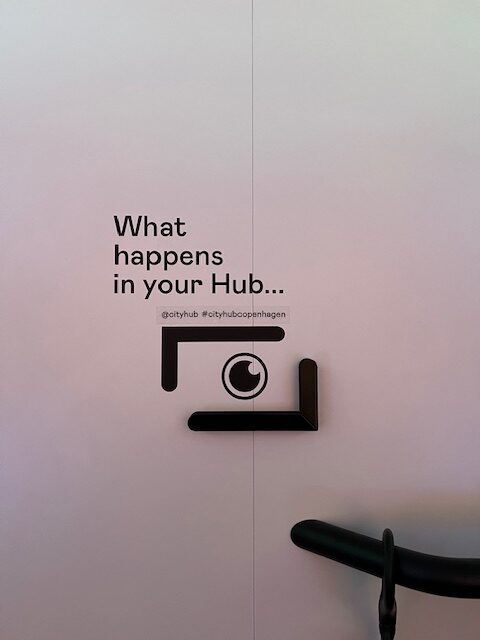
Promo’s Place
Of course, it wasn’t all print. Promotional products still had a place in the day-to-day operations of the hostel. The most important was a wristband, which included a small chip and was used to open doors and pay for things like drinks in the lobby or snacks in the vending machines. There were different color options, which made it more fun than simply being handed a room key or single style. People could accessorize to an extent and show their own personality.
And, of course, while exploring the city, there were plenty of souvenirs and branded products on display. In fact, the one that stood out to me was at, of all places, a burger joint. Restaurants and food service businesses have plenty of opportunities for branding, like T-shirts, stickers, hats and more. But when a product can tie in directly with the product at hand, even more than a coffee mug at a coffee shop, it’s pretty cool. Case in point: Gasoline Grill, known for being one of the city’s best burger spots, had a branded burger smasher for people to make their own smash burgers, but with a little bit of Gasoline Grill flair.
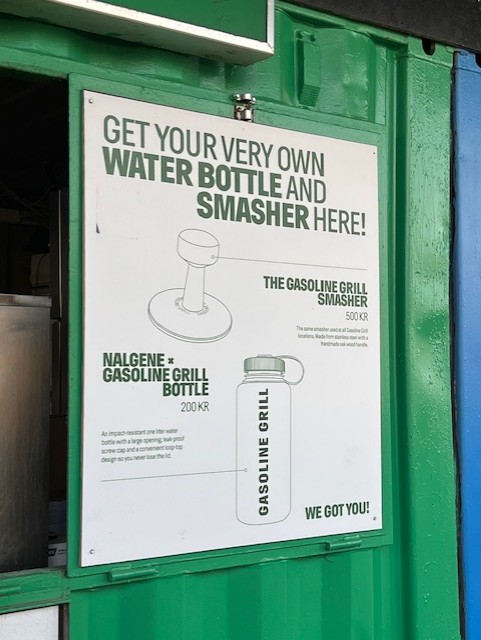
Bringing the personality and essence of a brand and creating engagement strengthens the brand’s connection with its customer base. Think beyond just where a logo can fit, and focus on what sorts of products the customers will enjoy engaging with and how the logo can factor into that design process.
Oh, and branded Nalgene water bottles were plentiful in storefronts there, echoing the prediction some drinkware suppliers made earlier this year as the tariffs threatened to make products like metal Stanley-style tumblers more expensive.
The Lessons
I didn’t expect to think about branding, print and promo on what was supposed to be a few days away from the job, but when you notice these things, it’s hard to turn it off. For print and promotional products distributors, the lessons here are that there are so many opportunities for branding if you go the extra mile. Don’t just fulfill the customers’ needs; find new opportunities to enhance their brand’s visibility and create ways to engage with the end-users, whether it’s print or promo or apparel. All of these products working in tandem not only do the heavy lifting of making sure you can find the bathroom but leave a lasting impression and create an unforgettable experience.



